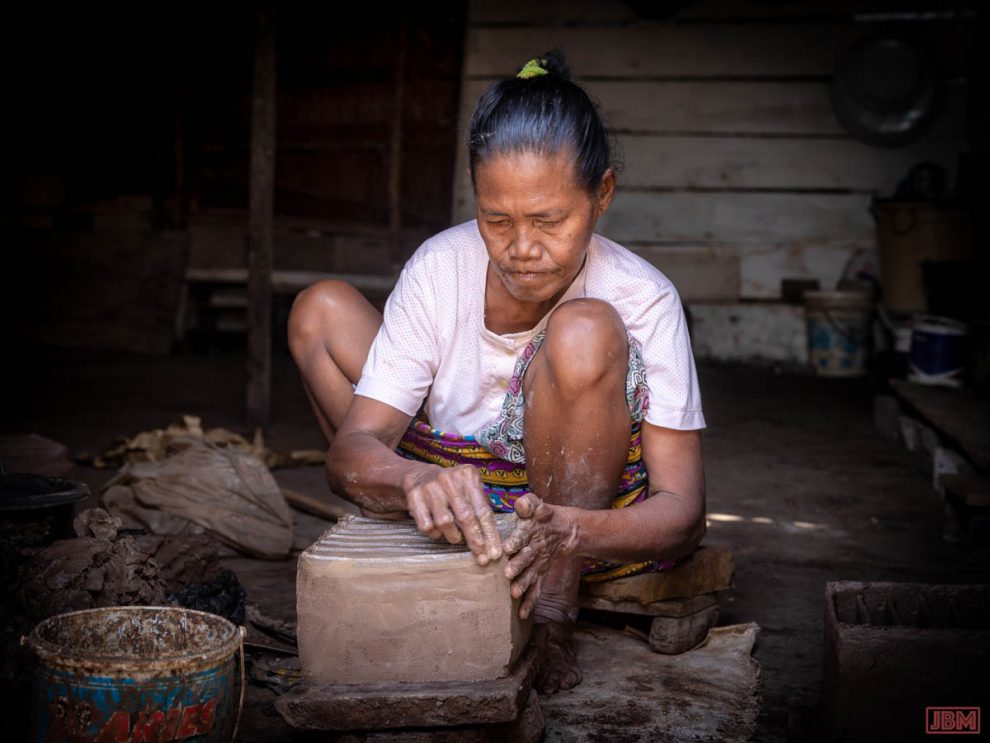
Mare (pronounced “Marr-ay”) is a small island, just 3 km long and 2km wide. It’s located to the south of the bigger island of Tidore, in the chain of active and inactive volcanoes that make up the province of North Maluku, Indonesia.
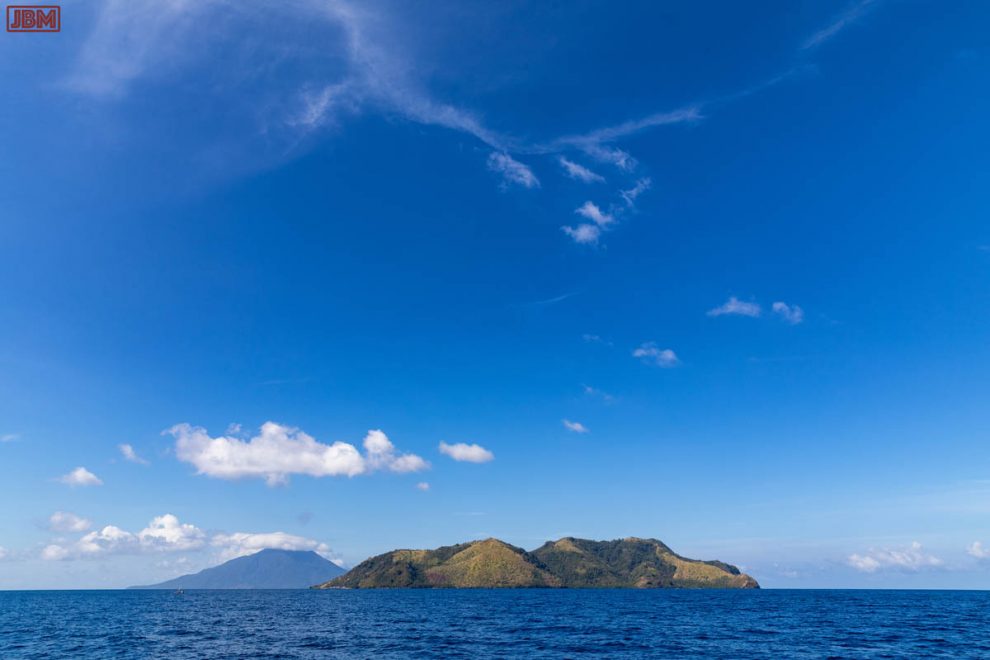
Unlike other islands of the province, it has no cone-shaped volcano towering over it. The soil is poor, and not well suited to agriculture.
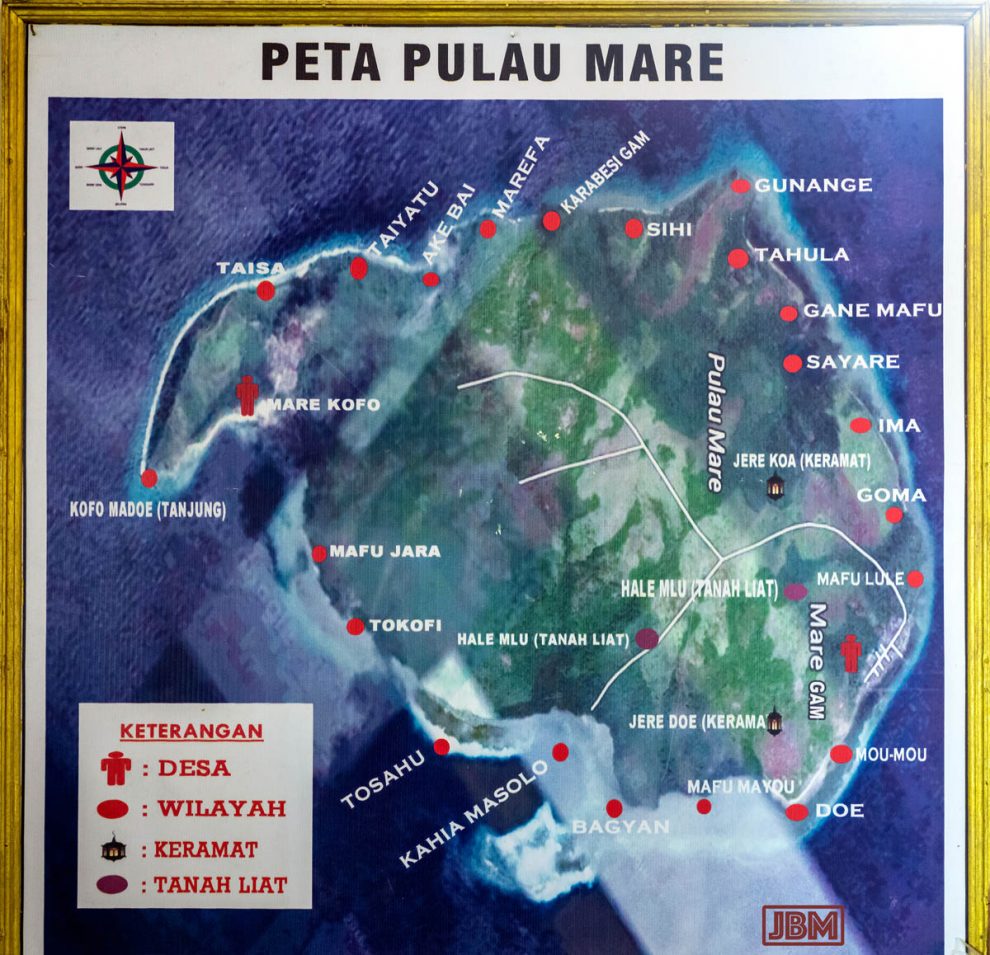
There are only two small villages on the island: the fishing village of Marekofo at the south-western end, and Maregam at the northeast tip. The whole island only has a population of around 1000, all Muslim and ethnically Tidorese people.
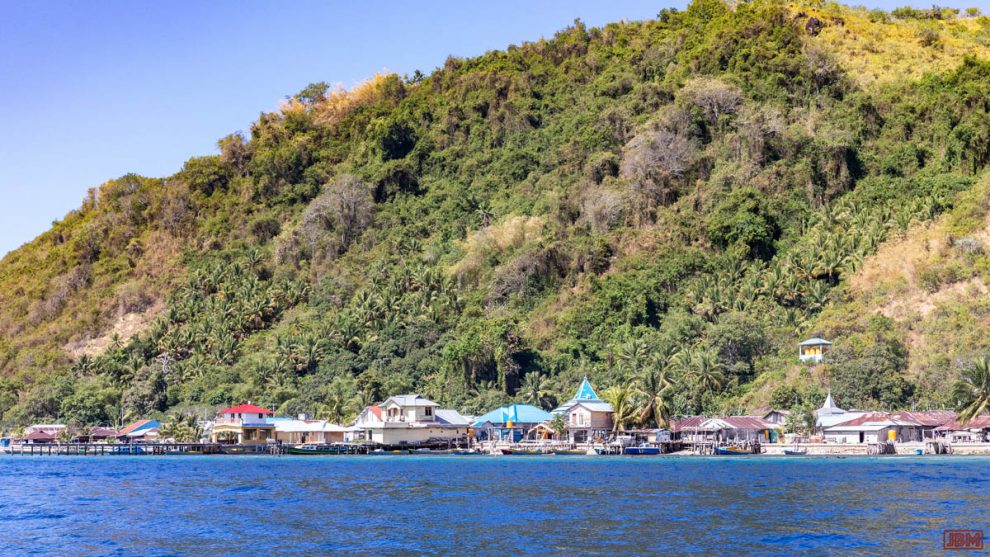
It might be small, but it’s famous for its rustic pottery, produced by women in the village of Maregam, and traded by the men all around North Maluku and West Papua. They make dozens of different products. In particular, Mare sago bread ovens (forno or keta) and bura cooking pots are found in just about every kitchen in the province.
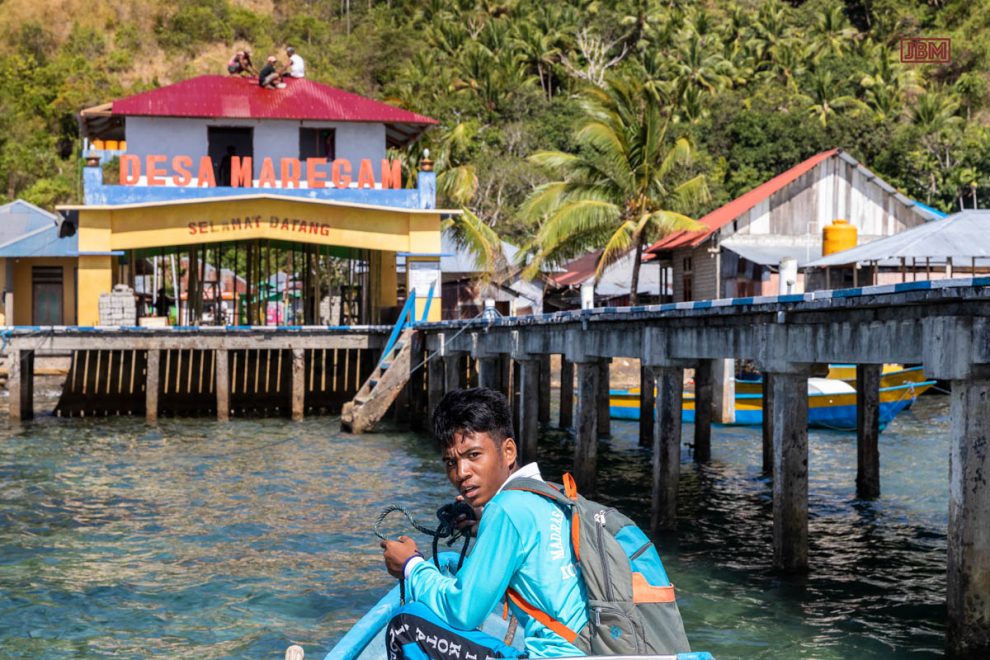
We had the good fortune to visit Mare back in April, and to see the processes used in this ‘cottage industry’ to make pottery. It seems like just about every woman in the village is a potter.
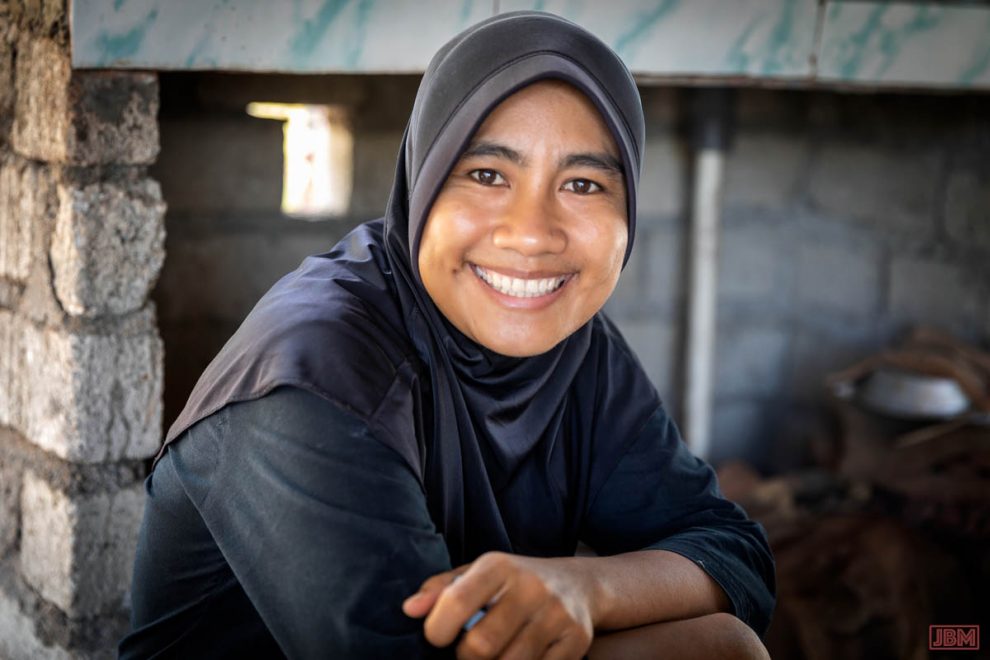
Everyone we met in the village was very friendly, and very happy to explain their work to us – and to be photographed while doing it.
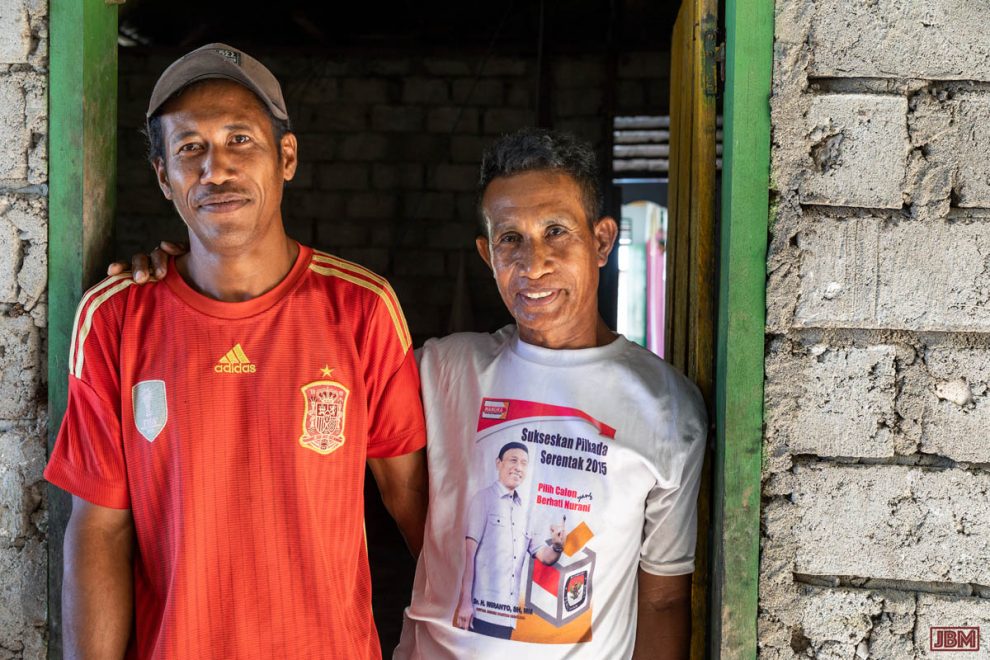
It all begins with the clay, which is collected by men from Maregam from four different locations on the island, the closest being on the small clifftop just behind the village.
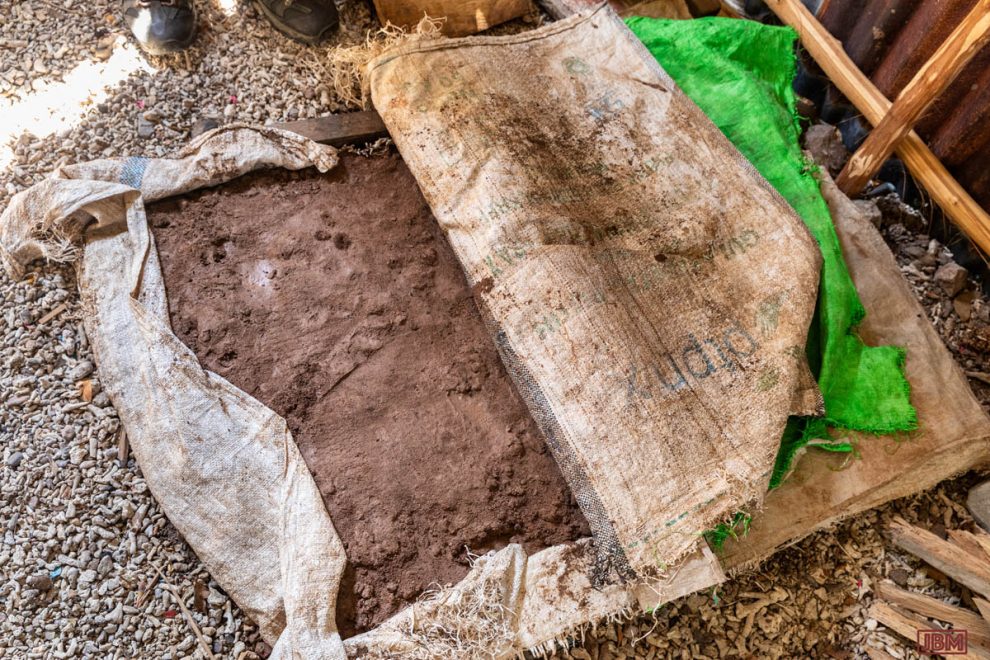
They carry it down to the village and leave it to dry for a few days, breaking it up into lumps. From this point on all the work is done by the women of Marekam. There’s even a belief that if men touch the softened clay after this stage, they’ll become infertile!
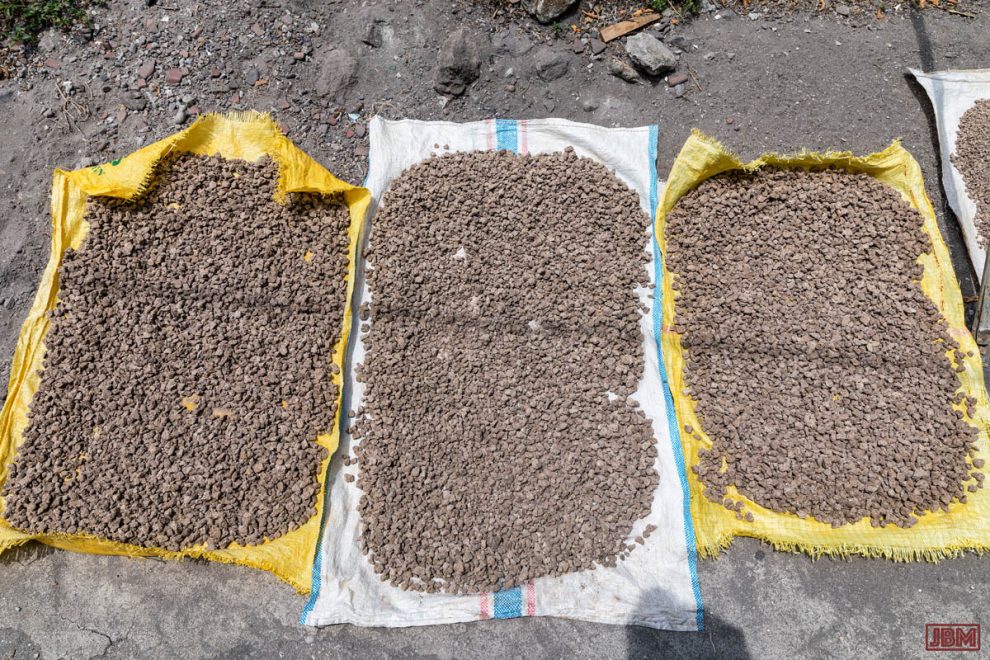
The clay is softened with water, any impurities (gravel or vegetable matter) are removed, and it is mixed with black sand collected from the beach.
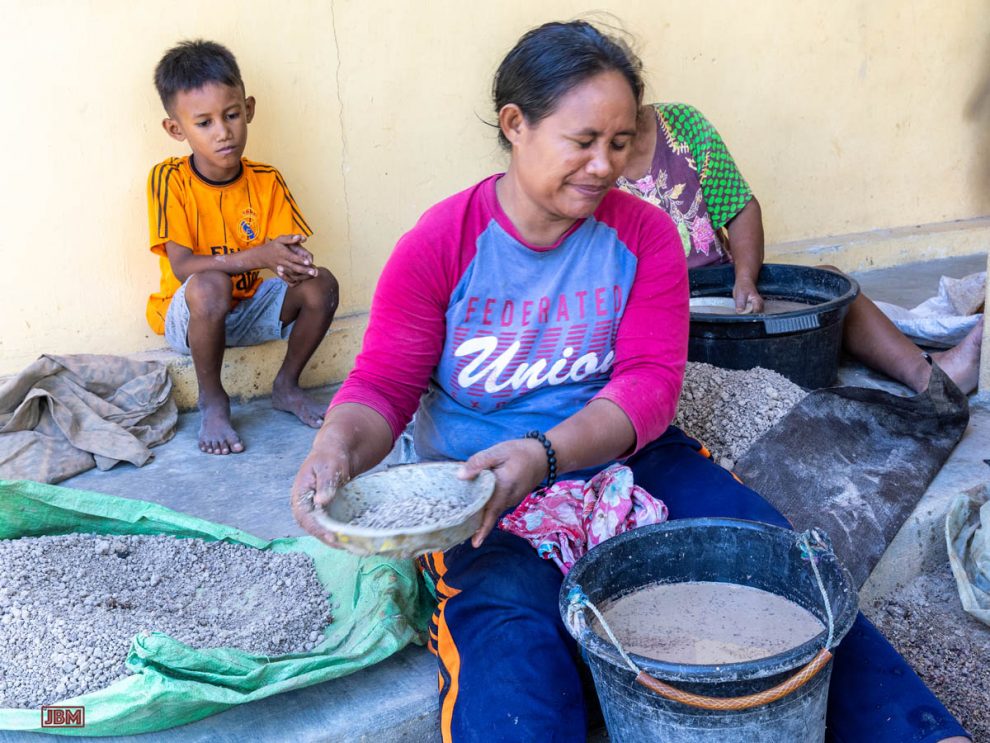
A ball of the soft clay is formed and thrown onto a flat working surface to make a disk, then roughly moulded by hand into the approximate shape of the object being created. For round forms such as bowls and the cylindrical ‘leg’ (known as a toro) of a forno sago bread oven, the shape is formed using a basic potter’s wheel.
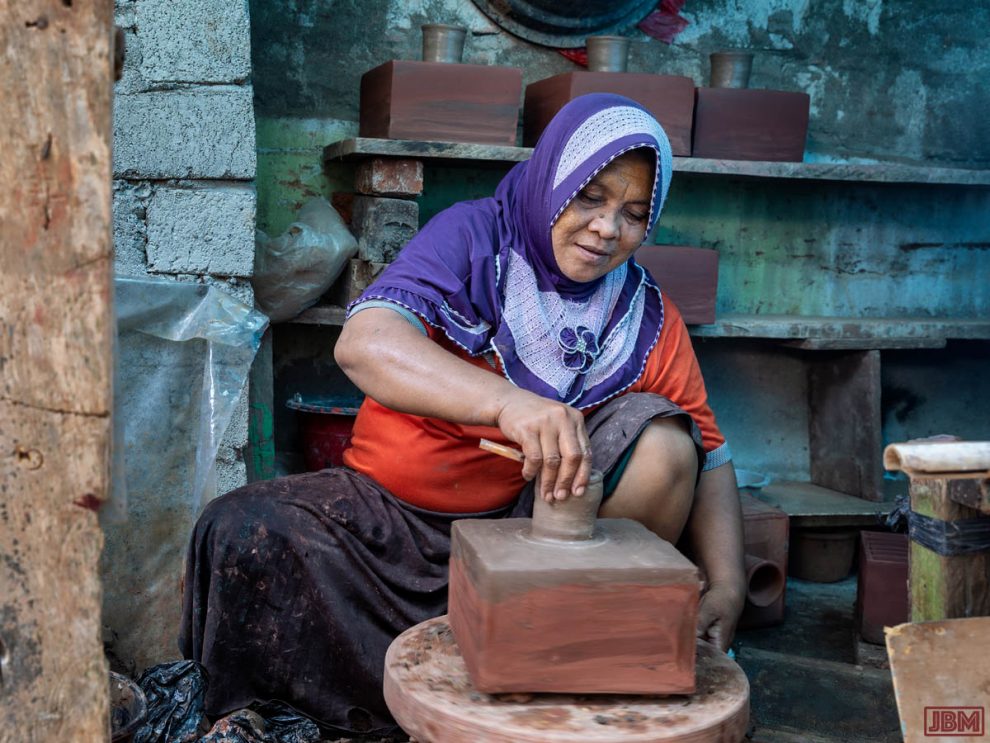
Apart from fingers, a small number of simple tools are used to assist in shaping the clay.
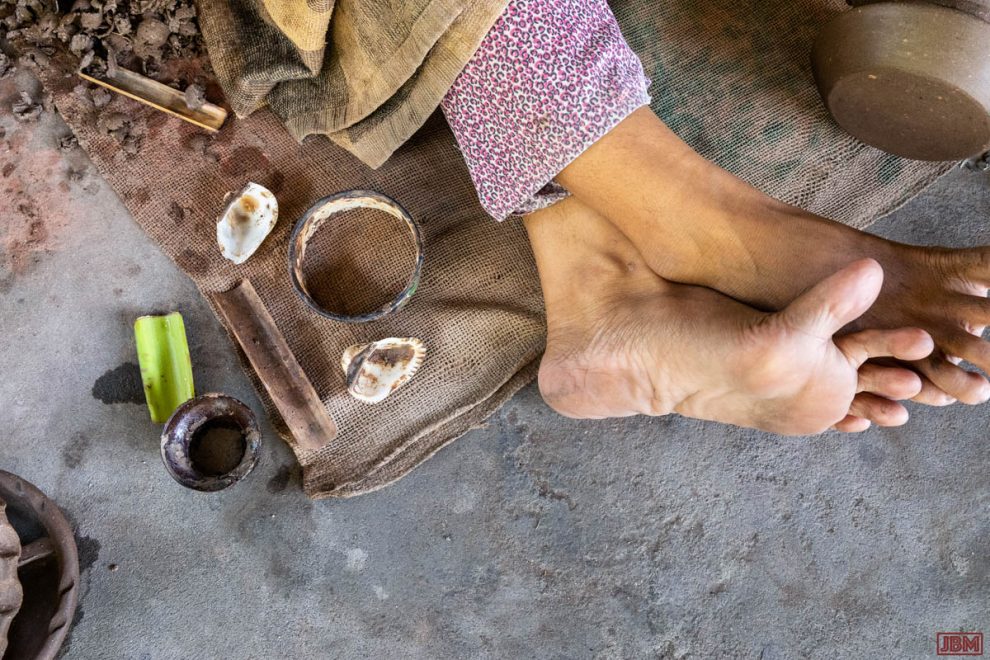
These (shown in pictures above and below) are:
- a wooden paddle (jako), used to slap the ball of clay into the rough shape of the desired object
- a round piece of coral, to shape the inside of bowls and other round objects
- a metal ring cut from the end of an old flashlight
- a short piece of pineapple leaf or split bamboo, used to form a smooth curved rim on the top of bowls etc
- a seashell (Anadara sp.) which is used to shave excess clay from the outside of objects
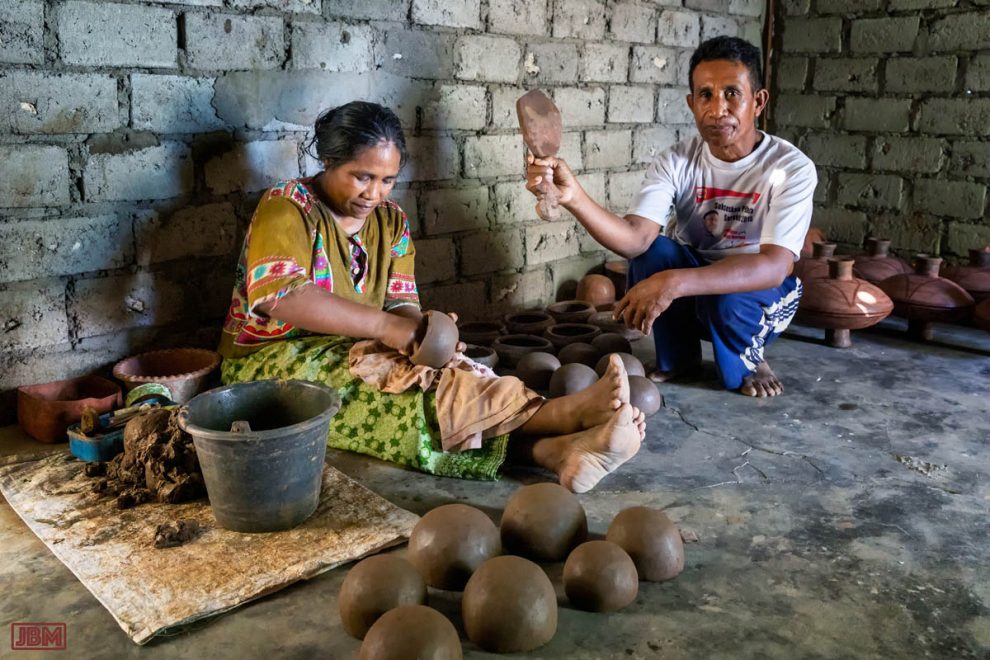
The use of such simple tools is one reason for the rustic and very ‘handmade’ finish which is a characteristic of Mare pottery.
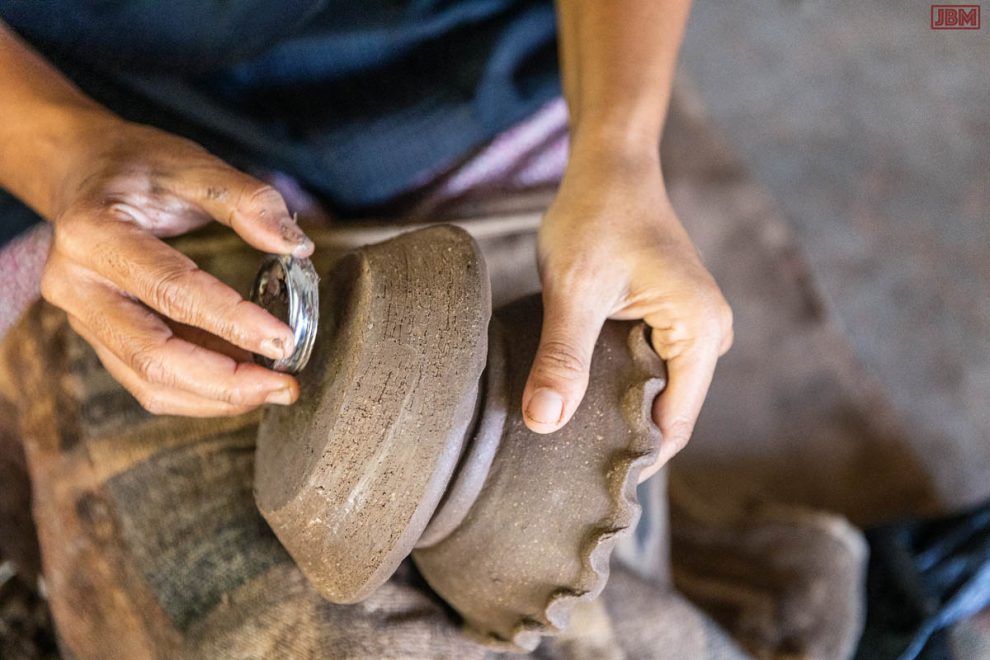
Pots are then ‘slipped’ with red soil collected from the nearby island of Halmahera, dried in the sun, and then roughly decorated by rubbing lines and spirals onto the outside with a piece of black volcanic rock.
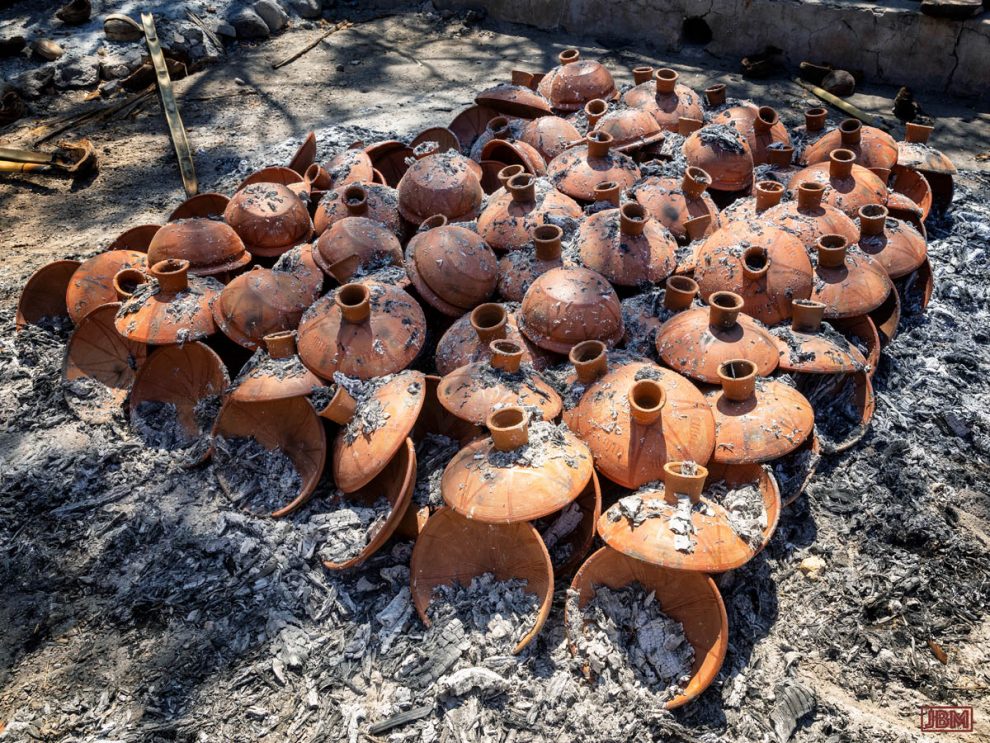
The firing of the pots isn’t done in an oven, but with a fire in the open air. The main fuel used is dried coconut husk. Firing is done fairly quickly, and at a relatively low temperature, which contributes to the somewhat fragile nature of Mare pots.
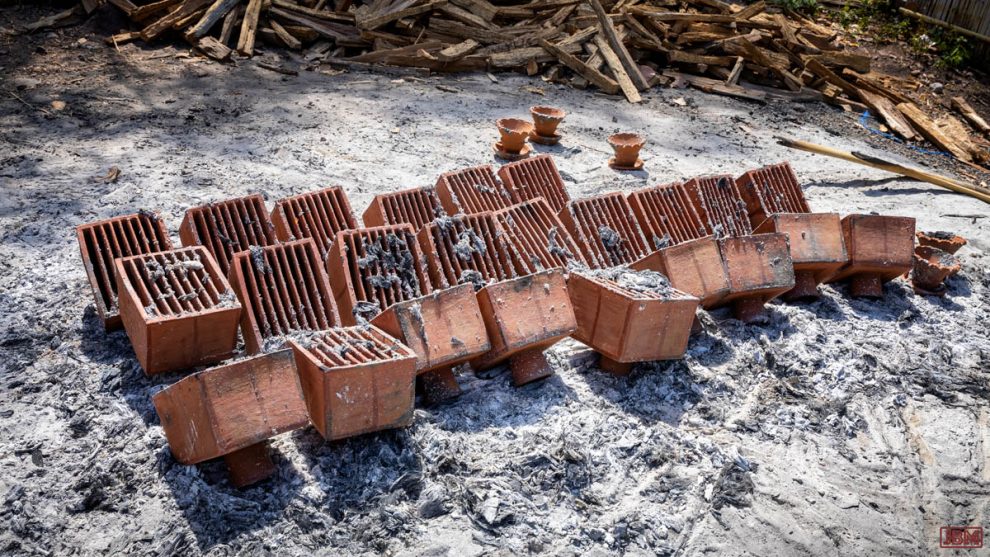
A small proportion of the pottery produced in Mare is sold at the Soacio market on the adjacent island of Tidore. Women carry as many pots as they can manage on the ferry to Tidore, then travel up the east coast to Soacio market by minibus,
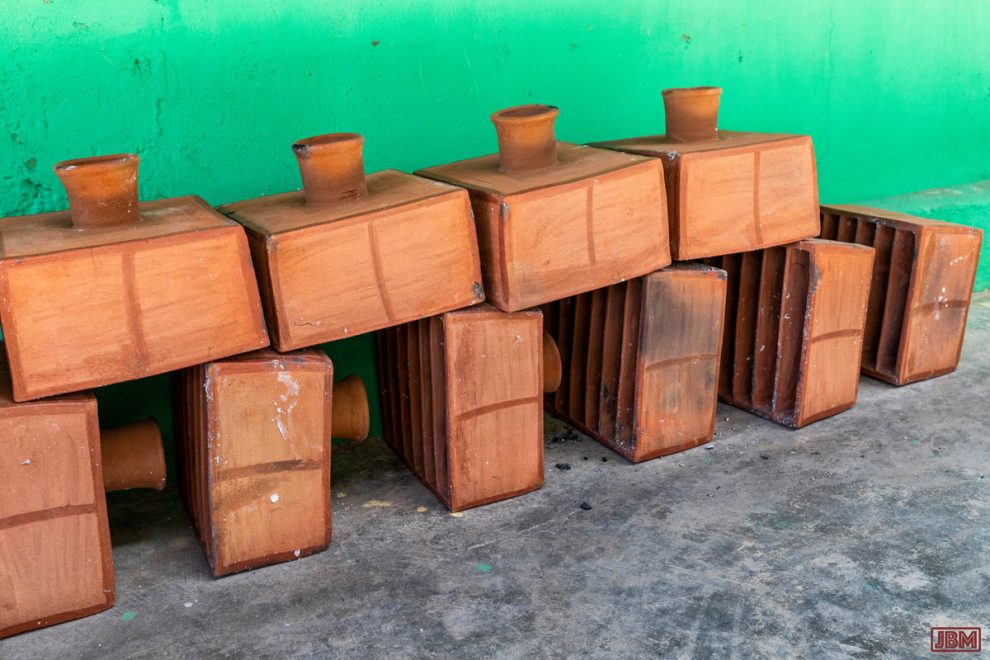
However most of the pottery is loaded onto larger vessels by men of the village, who then trade around villages on the islands of North Maluku and West Papua until all have been sold. These journeys can take them away from Mare for weeks or even months at a time.
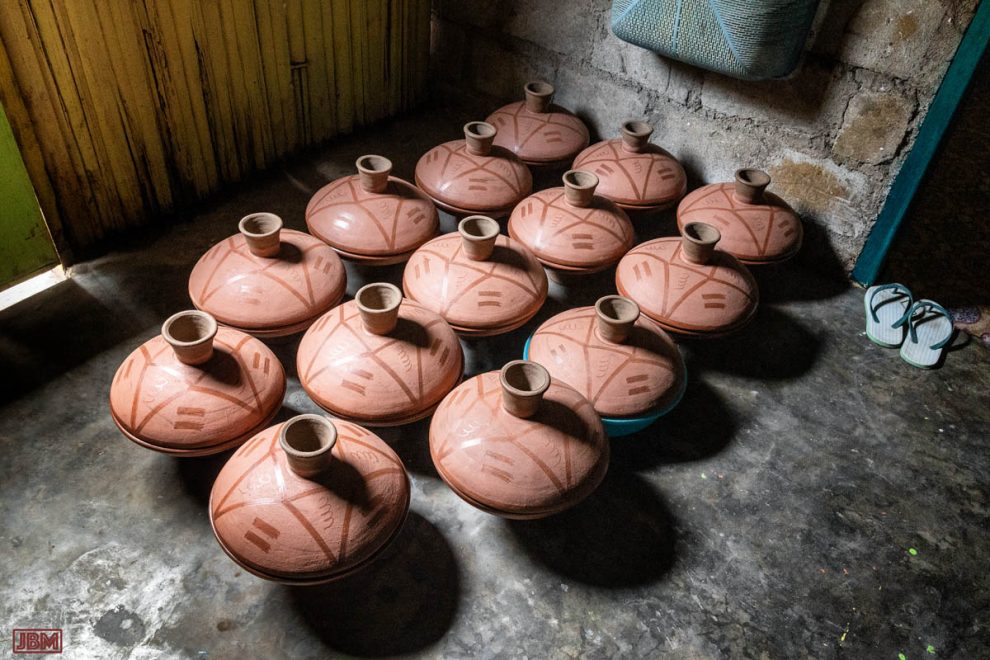
Some products are custom made to match the preferences of specific markets, varying shapes and numbers of slots in the sago ovens to suit local taste.
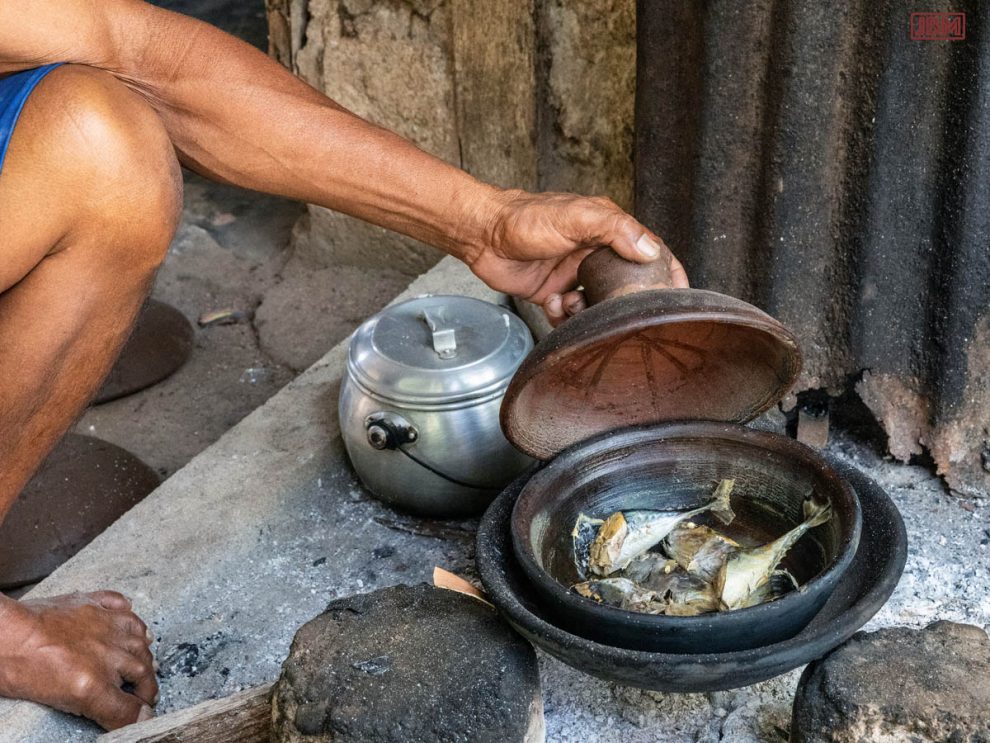
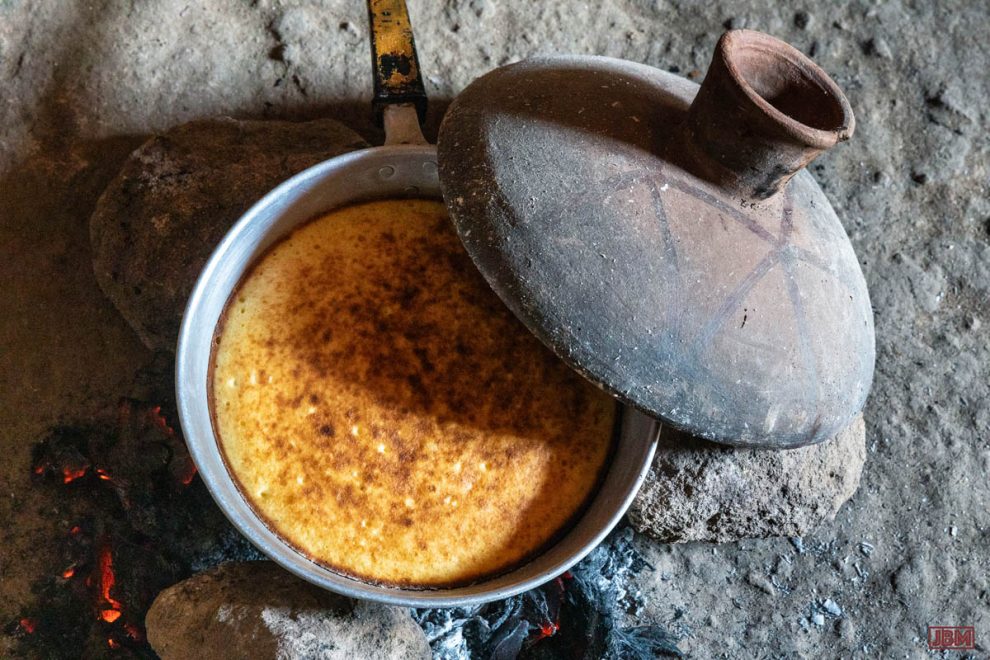
Sincere thanks are due to the people of Marekam Village, Pulau Mare, Tidore Selatan, Maluku Utara, for their generous hosting of our visit, and to our wonderful guide Pak Bahar for getting us there and managing all the logistics.
Note: Most of the facts in this post – and all of the photos – were collected during the course of our visit. But I must also acknowledge a debt to the great article “Technological choices among maritime potter-traders: The Mare islanders of Northern Maluku” by Akira Goto. (In Coexistence and Cultural Transmission in East Asia. Routledge, New York, 2011)

hi John n Karen, very
good to see You are still travelling around; very nice picttures n stories; felt like reading my old favourites comics with beautiful pictures of charachters n stories….going back in the old days when there were no tv, gadgets, netflix etc, . You know Indonesa better than us….so many places You hv visited since we met in Kelimutu, Flores last time….;let me know when You plan to visit Java again, perhaps we can meet.ferry atmadi n queeny.
Hi Pak Ferry, very nice to hear from you! Kelimutu seems like a very long time ago, and a very long way away from here in Canberra… but we still fondly remember your warmth and generosity (even more than the tri-coloured lakes!). Best regards to you to and your lovely wife.